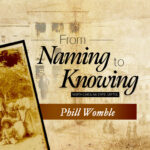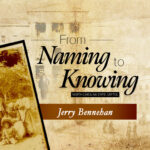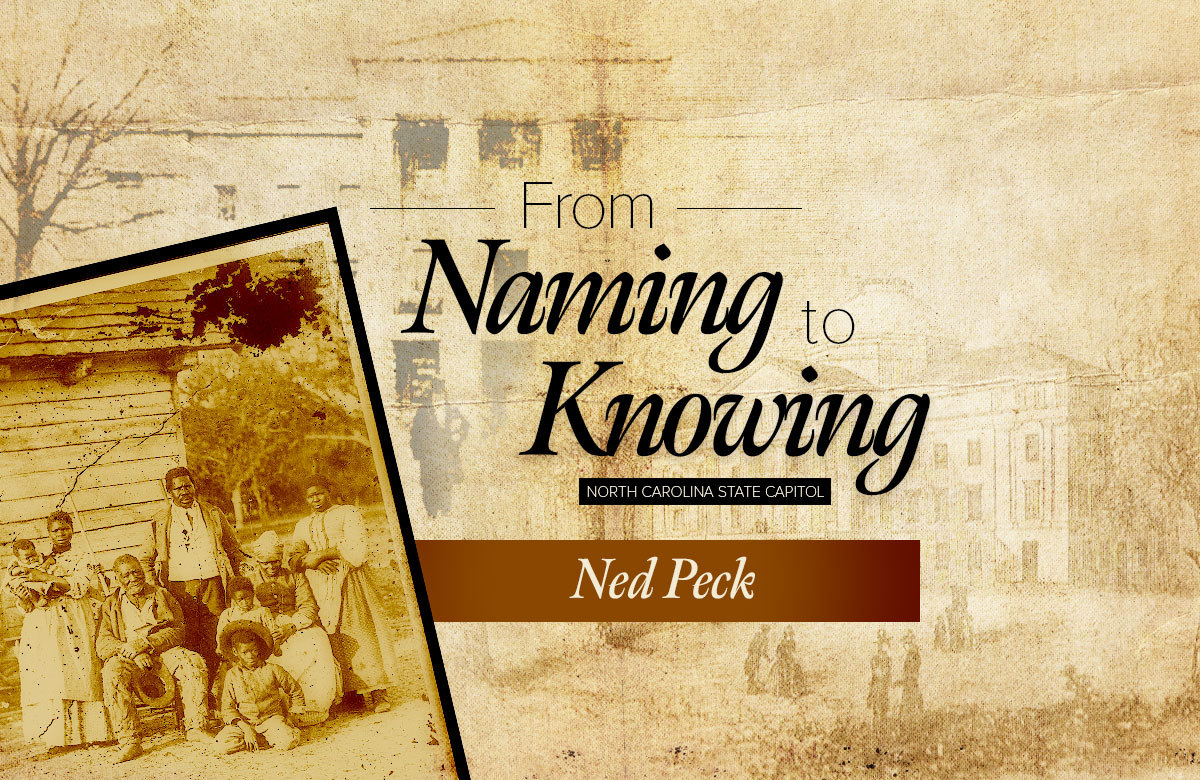
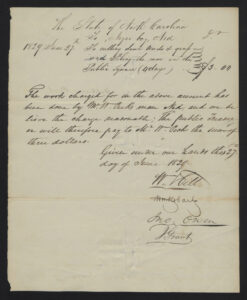
A slave schedule from the 1850 federal census lists the person we believe to be Ned as 48 years old, so it is likely that Ned was born around 1802. Prior to the Capitol’s construction, Ned’s enslaver William Peck hired him out to do work at the first State House. In June of 1829, the State of North Carolina paid William Peck three dollars for the work of “Negro boy Ned.” Ned had worked for four days clearing weeds from the State House square.
Ned’s name appears on the 1834 Report of the Commissioners appointed to superintend the re-building of the State Capitol as a “quarryman.” The state operated a quarry, which was positioned about a mile and a half southeast of the construction site. Ned’s skill at the quarry was highly valued for this project – at $1.25 per day. Ned was probably not able to pocket the money his labor generated; the money was likely kept by his enslaver William Peck.

In his 1844 will, William Peck noted that Ned had earned for him “more than two thousand five hundred dollars during the last 18 years,” so William Peck enslaved Ned at least from 1826 and hired Ned out, keeping the profits from Ned’s work.
William Peck’s will is useful in learning about Ned. In the will, William Peck left most of the people he enslaved to his son Willis, saying that he as their enslaver has “a right to dispose of them so, for having raised them all.” However, William singles Ned out, not leaving him to any family member, and instead stipulating that Ned should be free at William’s death and his wife’s death. William also made a note about Ned receiving $600 of financial compensation after he was freed, but then appointed his son Lewis to distribute the money. It is unknown whether Ned was actually given the money the will allotted him. William also advised that Ned stay with William’s family even after he was freed, and noted that Ned should be able to keep the “small house” that was built for him. The will states the house is on lot 176 in the city’s plan, which would place it on Blount Street, between Morgan and New Bern, just east of the Capitol.
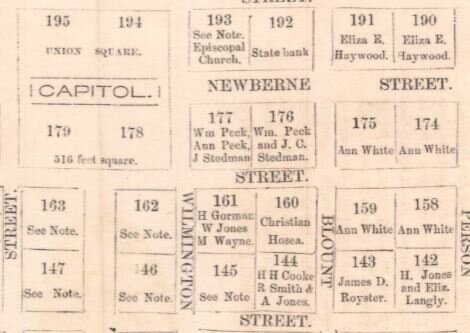
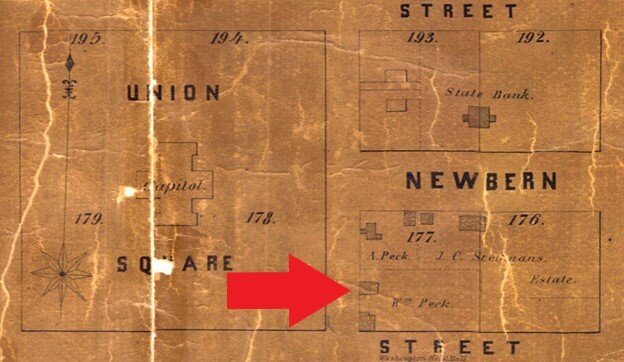
In an additional note at the end of the will, William Peck states that he is “really doubtful whether Ned has prudence sufficient to conduct for his own interest if liberated,” and therefore appoints his son Lewis as Ned’s “guardian.”
As useful as it is, several things are not made clear by the will. We don’t know if Ned was actually freed upon the death of William and William’s wife. Manumission laws (laws allowing enslaved people to be freed) were very strict in North Carolina. A bond of $1000 (or $500 for a person over 50) had to be posted for the enslaved person. County courts had to approve the manumission, and freed people were also required to leave North Carolina within ninety days of their freedom unless they were over the age of 50. North Carolina’s Act Concerning Slaves and Free Persons of Color, published in 1855, shows the laws that governed the use, trade, and monitoring of enslaved people and free People of Color, from the mid 1700s to the date of publication.
It is possible that Ned was biracial. On the 1850 federal census slave schedule, William Peck’s enslaved people are entirely listed as “M” for “mulatto” (a historical term used to note someone of African and White European ancestry), except for one young girl, who is listed as “B” for “Black.” (For more on the topic of sexual violence under slavery)
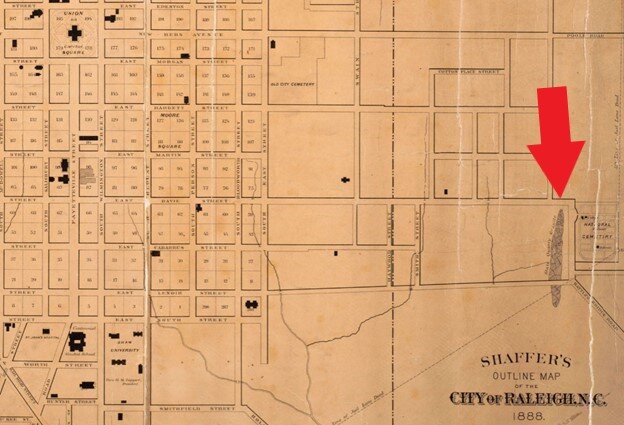
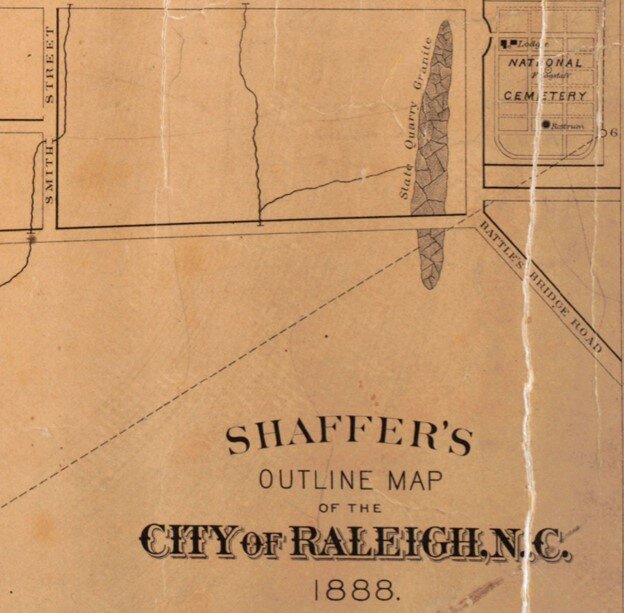
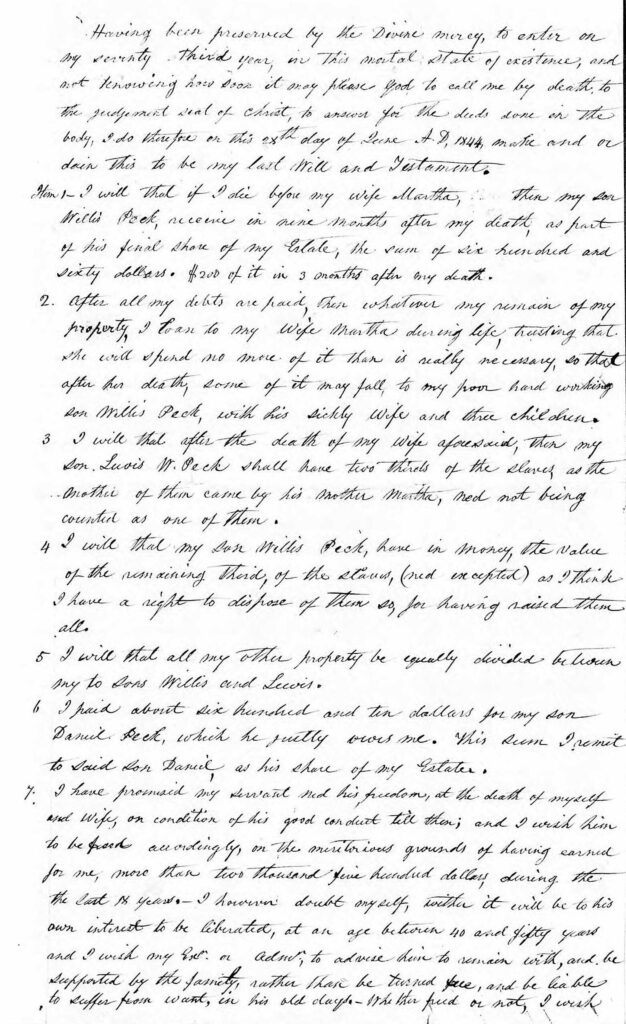
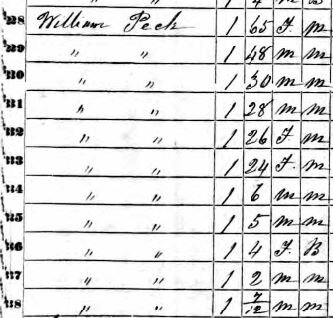
References:
- Census Of The United States, 1830-50, Record Group: Records of the Bureau of the Census, The National Archive, Washington, D.C.
- Map of the City of Raleigh. Surveyed and drawn by J.W. Johnson, 1847. Accessed in the Raleigh History Collection, State Archives of North Carolina.
- North Carolina, Slaves and Free Persons of Color. An Act Concerning Slaves and Free Persons of Color. North Carolina General Assembly, 1831.
- Plan of the city of Raleigh first published in the year 1834. Map printed by Walters, Hughes and Company, Raleigh, N.C. From the book, Early Times in Raleigh Addresses Delivered by the Hon. David L. Swain, 1867. Accessed in the Raleigh History Collection, State Archives of North Carolina.
- Report of the commissioners appointed to superintend the re-building of the State Capitol. Philo White, Printer to the State, Legislature of North Carolina, 1834. Accessed in the Raleigh History Collection, State Archives of North Carolina.
- Shaffer’s outline map of the city of Raleigh, N.C. 1888. Accessed in the Raleigh History Collection, State Archives of North Carolina.
- State House: Union Square, State Capitol Construction Records, Treasurer’s and Comptroller’s Papers. State Archives of North Carolina.
- “William Peck to Thomas Jefferson, 10 April 1818,” Founders Online, National Archives. [Original source: The Papers of Thomas Jefferson, Retirement Series, vol. 12, 1 September 1817 to 21 April 1818, ed. J. Jefferson Looney. Princeton: Princeton University Press, 2014, pp. 615–616.]
- William Peck, Wills and Estate Papers (Wake County). State Archives of North Carolina.
